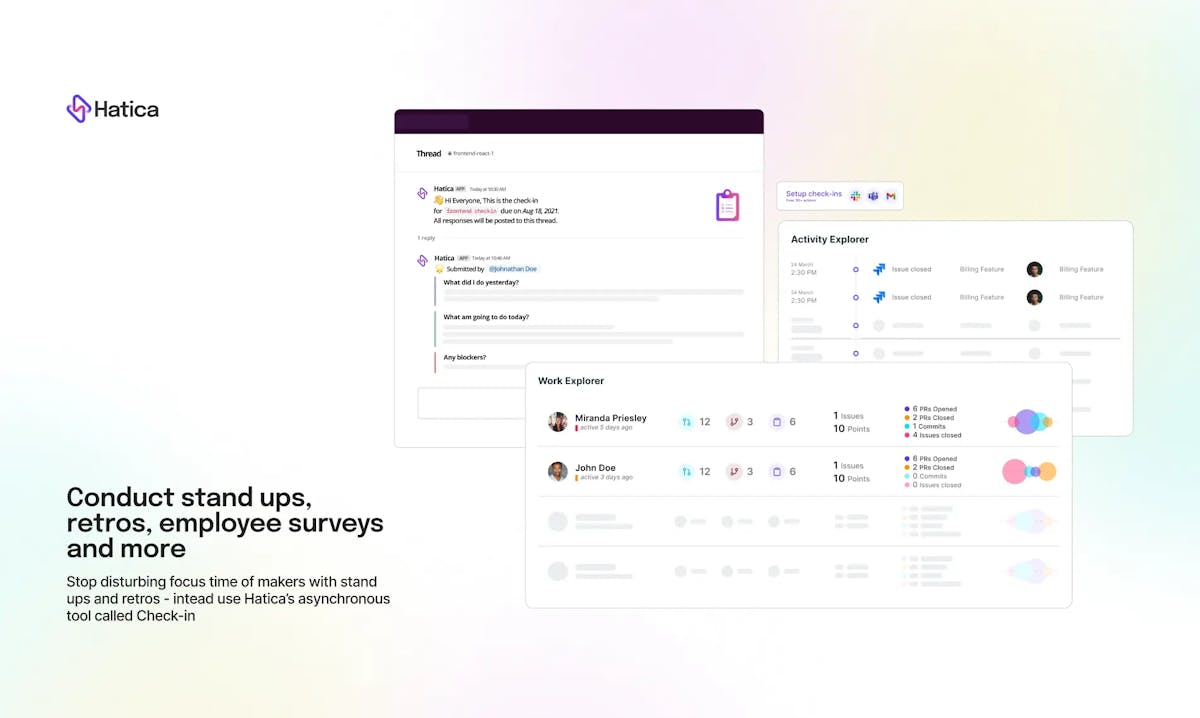What Are Stand-up Meetings?
Stand ups are short and strategic meetings that are usually held daily for the entire team. The main goal of the meeting is to get all team members concordant with a week’s or a sprint’s progress and highlight the hurdles or bottlenecks, if any. To accomplish this goal, team members take turns to answer the three-question template:
- What did I do yesterday?
- What will I work on today?
- Am I blocked on anything?
These three questions, when answered comprehensively by team members, provide visibility into each teammate’s progress on assigned tasks. More importantly, it helps managers identify any obstacles, a.k.a., blockers that might be hindering the team member’s successful completion of the task. Gaining visibility into progress and roadblocks can help managers coordinate efforts to resolve blockers and complete sprints successfully.
In a physical and co-located office, standups are usually short, timeboxed meetings that are short enough to be conducted while participants stay standing up for the duration of the meeting (hence the name!). In distributed or remote teams, stand-up meetings take a virtual avatar and are now mostly held as video meetings. Irrespective of the format, a stand up meeting facilitates high levels of transparency and accountability in the team. It helps to align team members with the team’s and the company’s direction and priorities and helps managers plan roadmaps while accommodating agile practices.
What are the Problems With Stand Ups in the Distributed Workplace?
Several distributed teams are increasingly reporting inefficiencies and hardships that are brought about by the video format of the stand-up meeting. Here are the most common ones:
1. Time zone incompatibility
Organizing and conducting meetings are easier when a team is co-located or even when a team works remotely but within the same time zone. However, it becomes challenging to schedule meetings in teams that are distributed across several time zones, since there is a higher risk of the meeting invading the personal time of employees in one geographical location. This means a few team members end up sacrificing their time and attend work-meetings post work-hours for the benefit of the entire team, which is unfair and can lead to problems in well-being and team cohesion.
For example, a manager located in San Francisco might schedule the daily stand-up at the start of her day but that would mean that some of her team members located in Asia would have to attend the meeting late at night. Another example is when engineers that are responsible for addressing incidents work long hours and sometimes work overnight to address and resolve issues. When these employees are required to attend early morning stand-up meetings, there might be an impact on their productivity as they might have had little to no time to relax or wind down.





